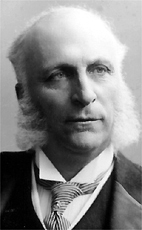Topic: Canadian Militia

The Canadian Militia
Some Reasons Why It Costs So Much and Is Not Better Than It Should Be
The Montreal Gazette, 20 July, 1908
(Ottawa Citizen)

The Hon. Sir Frederick W. Borden, KCMG, PC, MD
Minister of Militia and Defence (13 Jul 1896 – 6 Oct 1911)
The report of the Civil Service Commission on the militia laid itself peculiarly open to the sort of attack which Sir Frederick Borden delivered with considerable effect of Thursday last. The task of three able and conscientious civilian who undertook to probe a department which, besides being highly technical, is more or less of a close corporation, must needs be one of extreme difficulty. The amusing feature of their report was that the commissioners seemed to have an astute knowledge of what was wrong with the militia department, but their technical knowledge was not equal to extracting the necessary evidence to support their deductions. An extensive knowledge of the militia of Canada and of the inner workings of the militia department would be a necessity in order to carry out such an investigation properly. This the commissioners apparently had not, nor did they have any capable adviser to direct their probing operations. With a brief composed of newspaper extracts, which were not always intelligible to the investigators, and a mass of data composed largely of ex-parte statements and rumors, they endeavoured to secure evidence corroborative of abuses known to exist. The results did more credit to their spirit of enterprise than their capacity for a task which required wide technical knowledge. Nothing daunted, they brought in a report which in a general way touched the sore spots most effectively, but which the record of evidence as adduced rather vaguely justified.
Sir Frederick Borden, aided by copious memoranda prepared by the inspector-general and late chief-of-staff, strategically ignored the findings of the commission, but riddled the evidence as the assumed basis for the findings. It was cleverly done, but it left the main points of attack, by the commissioners unanswered. Chief among these were the charges that while the expenditure of the militia of Canada had increased from $1,500,000 to $6,500,000 this country has not got a return for the money of anything like the relative value. The actual numbers of effective troops has increased, on the minister's own showing, only about 30 per cent, which the expenditure has increased over 400 per cent. There has been an enormous increase of expenditure on the upper works of the militia organization with no commensurate addition to the real fighting strength of the force. But it would be nonsense to say that the militia of Canada has not greatly increased during the past ten years. Why should it not, with an expenditure four times as great as formerly" Excellent work has been done in the organization of the auxiliary services, which previously did not exist, that does not begin to account for a tithe of the additional expenditure. The personnel of the artillery has been increased one-third, but the actual effective armament has not been increased at all, because the new batteries were created by cutting down by one-third the number of guns in the existing batteries.
The explanation put forward as to where the money has gone is that Canada has taken over Esquimalt and Halifax. While that is true, it did not necessitate keeping up the number of regular troops that Great Britain maintained in North America. Canada has also taken over the dockyards, but it has not been deemed necessary to maintain a North Atlantic squadron equal to the one which Britain withdrew. Halifax and Esquimalt could be maintained quite as effectively with much smaller garrisons, and the money thus saved would maintain a very large additional number of militia troops. At a rough computation, twenty militiamen can be maintained at the same cost as one regular, and in those figures lies the kernel of the whole difficulty. For a country like this it requires no particular knowledge of military matters to appreciate that 20,000 efficient militia would be a far better asset than 1,000 regular soldiers, which is their financial equivalent. For the current year the expenditure on the active militia for training, clothing, grants, etc., was only $1,500,000, which means that $5,000,000 is being spent on the permanent corps, headquarters staff, and for all other purposes. On the face of it this division of expenditure would demand extensive explanation to Parliament as an answer to the general allegation that the militia administration is not as effective in results the money spent on it should justify. This is what the Civil Service Commissioners were trying to get at. But the speech of the Minister was chiefly taken up with reflecting upon them personally, ridiculing such obviously impracticable suggestions as that the militiamen should be paid by cheque like civil servants; that an individual in the department was treated "brutally" because he was retired on $1,350 a year, and in rebutting the allegation that an old officer employed as a paymaster in Halifax was incapable of discharging the duties of his position. There were sundry other matters of relative unimportance, which were triumphantly repudiated to the satisfaction of the Minister and his advisers. But Parliament and the people of Canada are still uninformed why an expenditure of $6,500,000 only produces a few thousand more trained militia than an expenditure of $1,500,000 produced twelve years ago.

